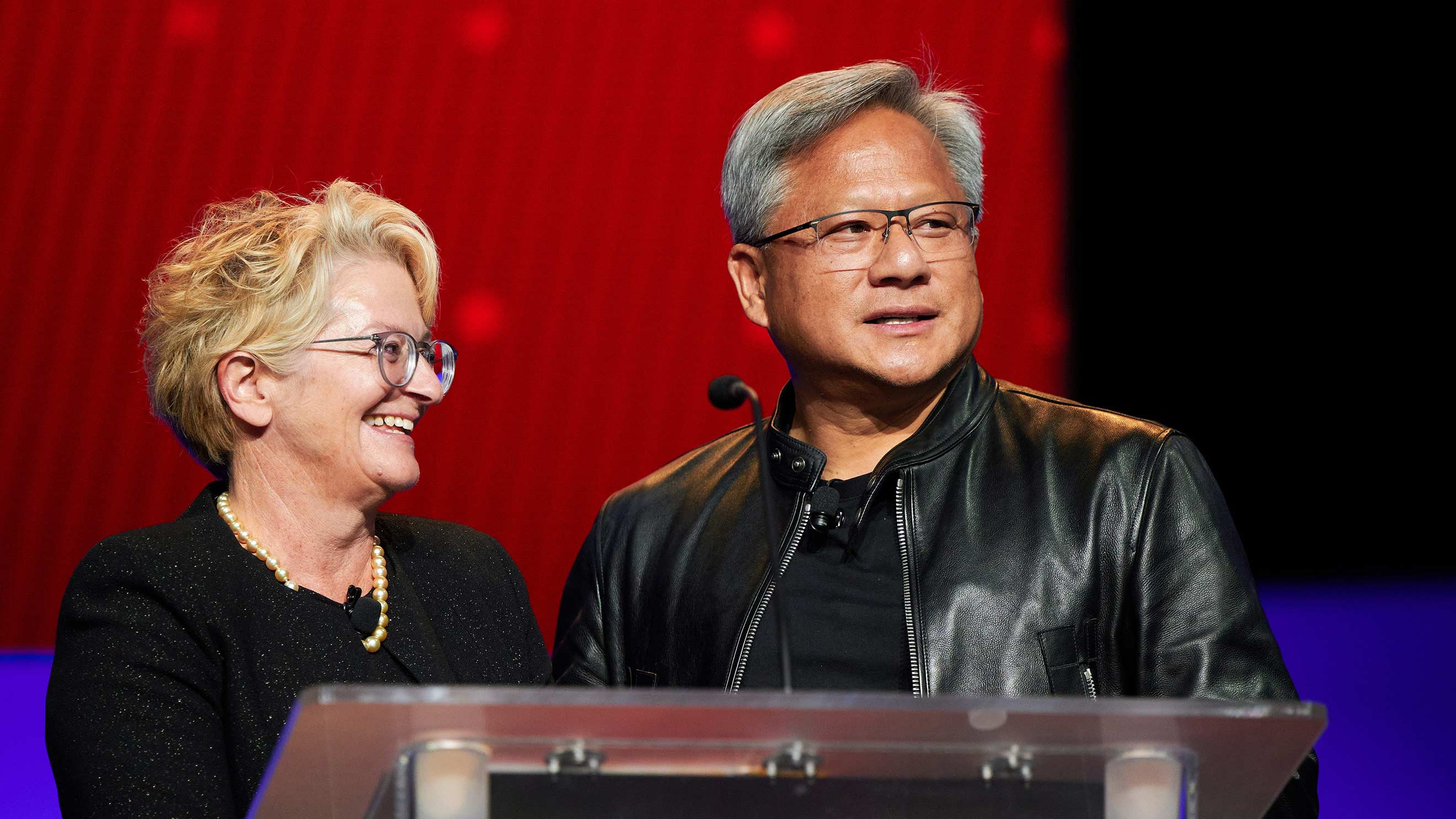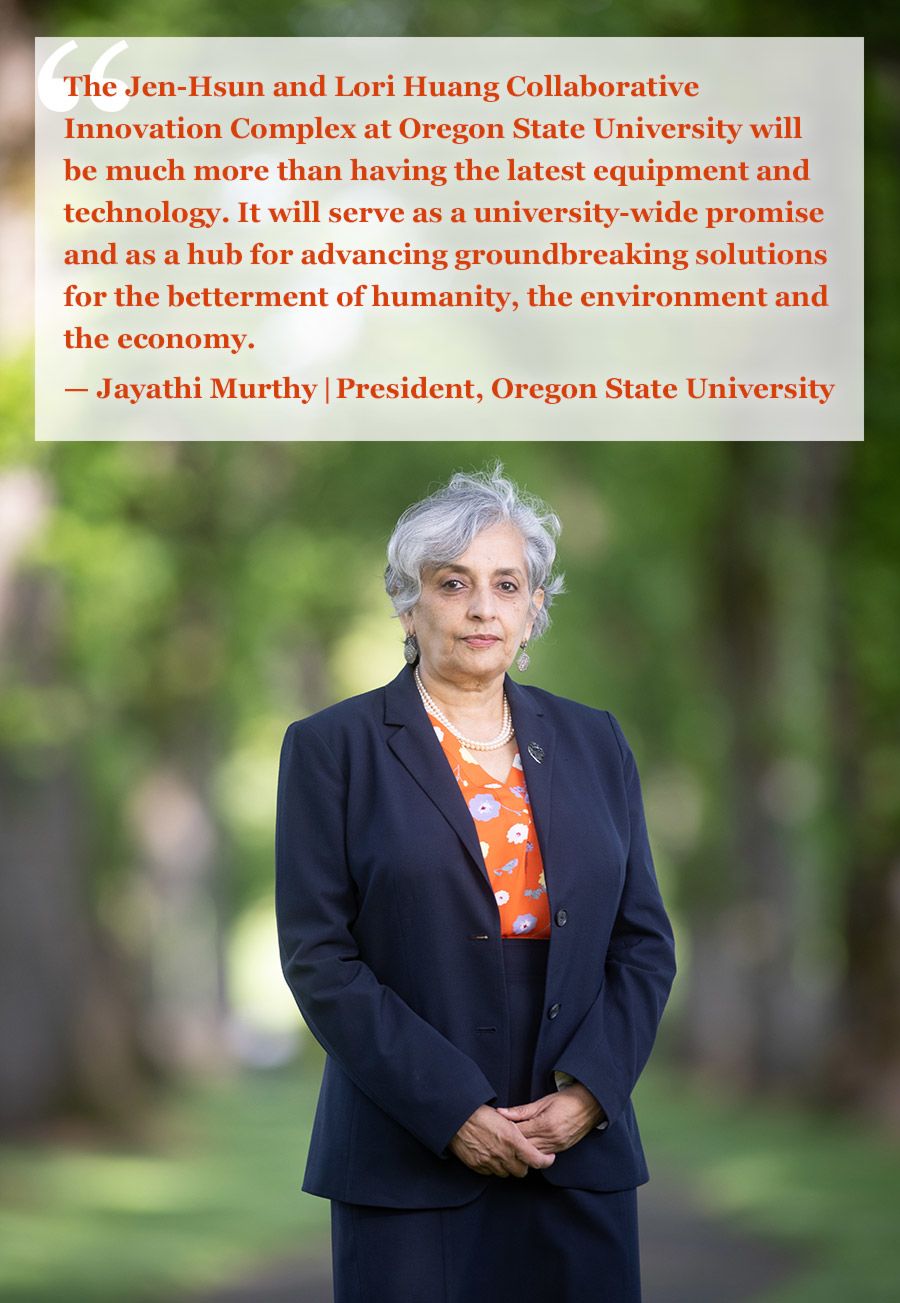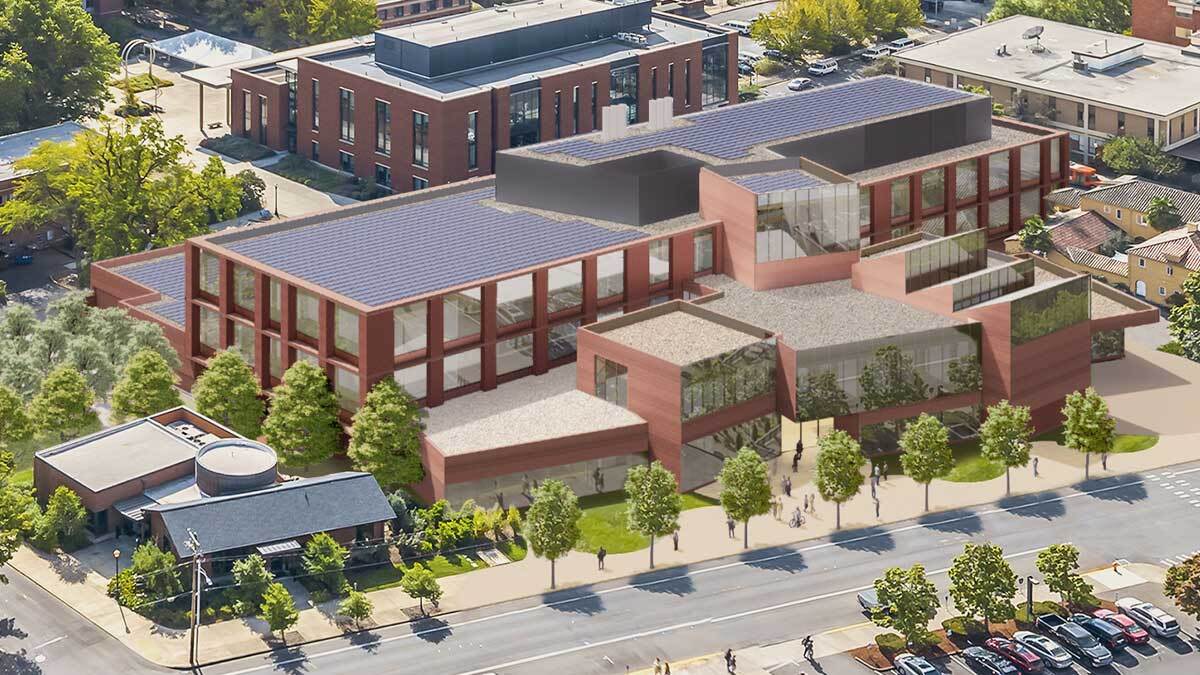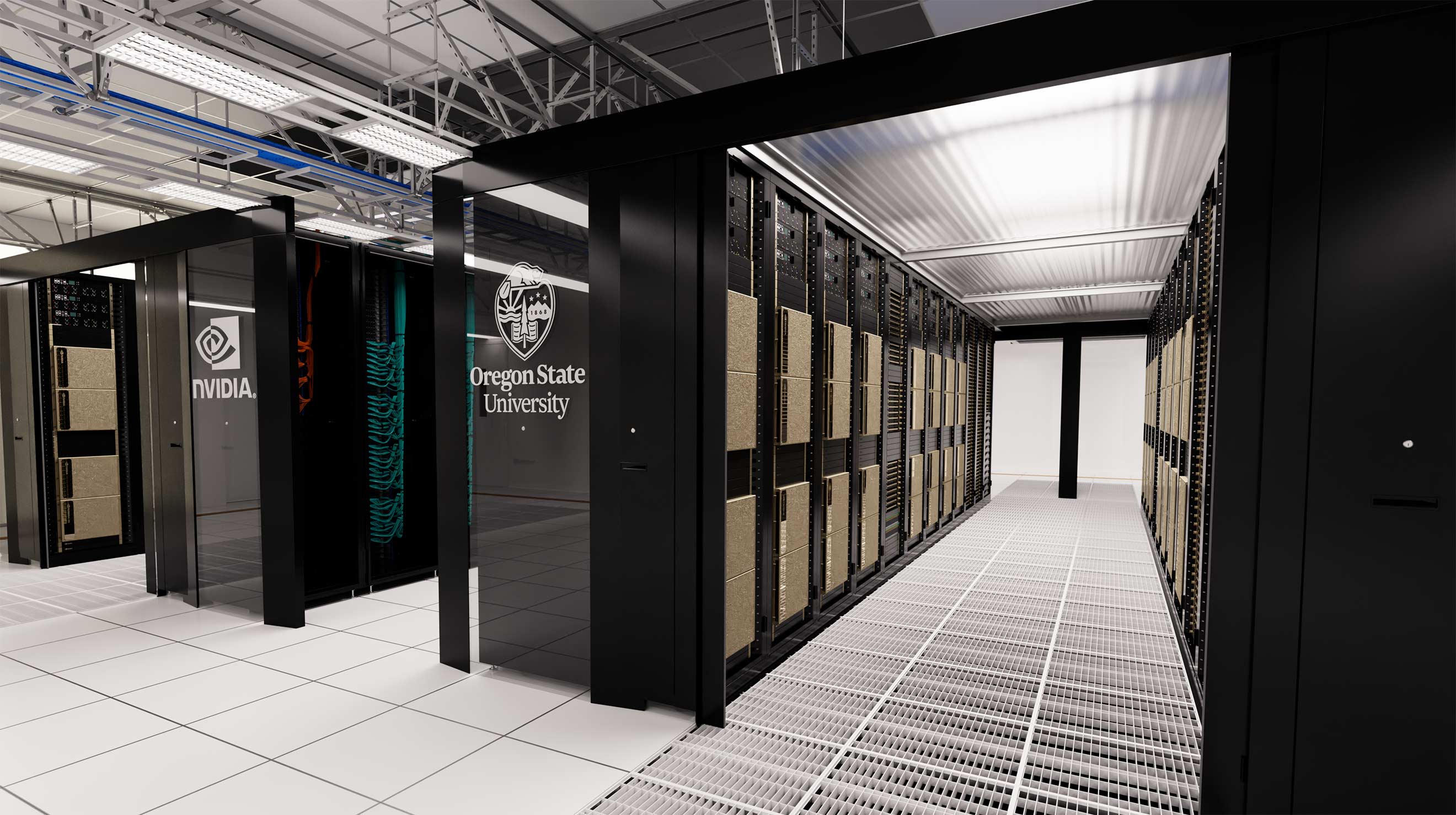The Jen-Hsun and Lori Huang Collaborative Innovation Complex
Oregon State University launches world-class research center

The Jen-Hsun and Lori Huang Collaborative Innovation Complex at Oregon State University is a dynamic place where creative, driven faculty and students will work together to conduct research to solve critical challenges facing the nation and the world.
Harnessing one of the nation’s most powerful supercomputers, faculty and students will engage in team-based, transdisciplinary education and research to address global challenges such as climate science, oceanography, sustainability and water resources.
The complex underpins Oregon State’s research and education efforts to increase support for the semiconductor and broader microelectronics industry in Oregon and the nation. The complex will support innovation, entrepreneurship and partnerships with industry while helping to prepare graduates from bachelor’s degrees through Ph.D.s for the workforce in Oregon and beyond.

Discover more: leadership.oregonstate.edu/cic
Funding for the $213 million complex includes a $50 million gift to the OSU Foundation from NVIDIA founder and CEO Jen-Hsun Huang and his spouse, Lori. The Huangs are graduates of the Oregon State University College of Engineering.
“We discovered our love for computer science and engineering at OSU. We hope this gift will help inspire future generations of students also to fall in love with technology and its capacity to change the world.”
— Jen-Hsun and Lori Huang
The three-story, 150,000-square-foot complex is being designed and is planned to open in 2025.
“AI is the most transformative technology of our time. To harness this force, engineering students need access to a supercomputer — a time machine — to accelerate their research. This new AI supercomputer will enable OSU students and researchers to make very important advances in climate science, oceanography, materials science, robotics and other fields.”
— Jen-Hsun and Lori Huang

The new Oregon State complex will employ an NVIDIA supercomputer to support faculty in addressing highly complex and challenging computational problems. Powered by next-generation NVIDIA CPUs, GPUs and networking, it is expected to be among the world’s fastest supercomputers at a university, powerful enough to train the largest AI models and perform complex digital twin simulations. A state-of-the-art clean room and other specialized research facilities will also be included in the complex.
Oregon State University President Jayathi Murthy says the Jen-Hsun and Lori Huang Collaborative Innovation Complex is about more than having the latest equipment and technology.
“It will serve as a university-wide promise and as a hub for advancing groundbreaking solutions for the betterment of humanity, the environment and the economy.”

The Collaborative Innovation Complex will include:
- A next-generation NVIDIA supercomputer.
- A state-of-the-art clean room to advance discovery and learning.
- A makerspace, providing student access to innovative tools that enable hands-on and experiential learning.
- A cyber-physical playground providing human interaction with next-generation robotics for integration in the real world.
- An extended reality theater that will combine high-resolution motion-capture technology and augmented reality.
The theater will enable the imaging of digital simulations, including portraying the human body to help advance wellness. Simulations will also demonstrate the design and operation of complex machines, such as how drones and robotics integrate into society and the workplace.
- Laboratories that link research with fieldwork to address water resources, including the availability of clean water.
Cutting-edge use of technology
“The Collaborative Innovation Complex will transform not only the College of Engineering but the entire university. It will have an economic and environmental impact on the state of Oregon and the nation.”
— Scott Ashford | Dean, College of Engineering.
Environmental and electronics researchers working in the complex may design sensors for use at sea or in forests to monitor hard-to-track endangered species and then use AI to analyze the gathered data. Oregon State University faculty, along with collaborators from other universities, businesses and state and federal agencies, will pursue techniques in the center’s clean room for making leading-edge computer chips.
Acknowledging Oregon State’s commitment
Oregon State University’s plans have already been recognized by Oregon government officials including U.S. Sen. Ron Wyden and Gov. Kate Brown, who are co-chairing a task force to support the state’s semiconductor industry.
“This state-of-the-art facility provides the opportunity for Oregon State faculty and students to make generation-defining discoveries to push our tech industry forward. I am very excited for Oregon State to open this incredible facility and bring together the best and brightest to provide interdisciplinary solutions to complicated problems.”
—Sen. Ron Wyden, D-Ore.
Discover more: leadership.oregonstate.edu/cic
This custom content is sponsored by Oregon State University and developed by Inside Higher Ed's sponsored content team. The editorial staff of Inside Higher Ed had no role in its creation.


